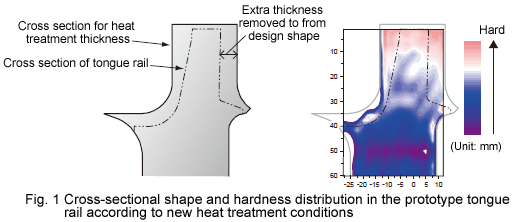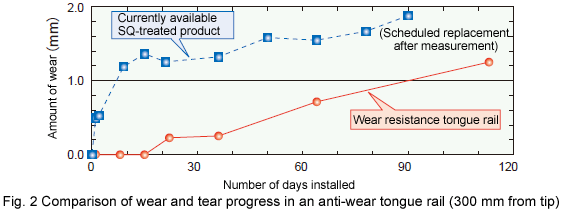Tongue rails are subjected to heavy wear and tear, and replacement cycles are short in point portions where many trains pass on the branch line side for both Shinkansen and conventional lines. Accordingly, the RTRI further increased wear resistance over that of tongue rails subjected to slack quench heat treatment (SQ treatment), which have so far been adopted as countermeasures against wear and tear. A new wear resistance tongue rail was also developed with the aim of extending service life.
The wear resistance tongue rail developed in this study changed the material from rail steel for SQ treatment to rail steel for heat treated rail. In order to satisfy both of surface hardening and appropriate ductility along the depth to prevent break, the tongue rail is manufactured according to new heat treatment conditions devised considering an effect of extra thickness to finally from design shape at the time of heat treatment on a rail temperature.
The RTRI demonstrated that the wear resistance tongue rail developed satisfies the relevant standards under all tests, including the falling test, specified in JIS. The Institute also test-installed the prototype wear resistance tongue rail at a point portion on a commercial line where scheduled replacement was conducted every four months with SQ-treated tongue rails. The amount of wear and tear at a position 300 mm from the tip (where the progress of wear starts) was examined, and a good level of performance was confirmed (Fig. 2).
The tongue rail developed here will be expected to reduce the frequency of tongue rail replacement and contribute to decrease maintenance costs.
|



